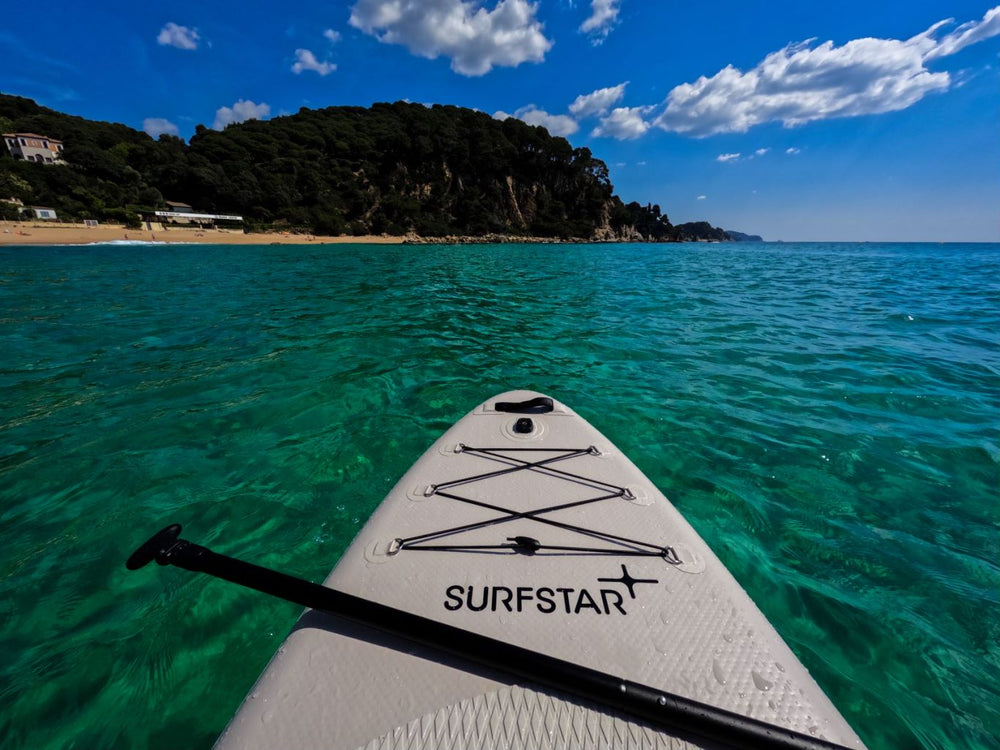How To Keep Warm And Stay Safe When You Go SUP During Cold Weather
Stand-up paddleboarding can be a great year-round sport, but of course the weather might not always be the ideal conditions for your next adventure. While we all wish that the temperature could be above 80 degrees, with the sun shining bright on our faces every day of the year, this is likely not going to happen. However, just because the temperature is dipping doesn’t mean that you have to put away your board. In fact, SUP can be a great way to continue getting outdoors during the winter when other water sports may not be as safe or easy to continue.
When going paddling during the colder months, there are definitely some different safety precautions that you should consider. You’ll also want to swap out some of your gear to make sure that you are keeping warm and setting yourself up for success.
Here are some of the ways you can prepare if you plan a SUP trip when it is cold outside.
Try to stay closer to shore
During the winter months, you want to make sure that you are never more than 15 to 20 feet from the shore. While at first this may seem silly, it can actually save your life. Colder weather is going to mean that the water is also much colder. This increases the risk of hypothermia if you were to fall in the water for any reason. You are not going to be able to swim as great a distance when you are in colder water, either. Staying close to the shore will ensure that you are never too far from help, should you need it.
Wear protection
You want to make sure that, when you are paddling during cold weather, your body is as protected as possible. You can choose to wear a wetsuit or a drysuit, which are going to provide different forms of protection against the water. While a wetsuit is designed to heat any water that gets trapped between the suit and your body, a drysuit is basically waterproof and is designed to keep the water out entirely. It will come down to personal preference, however you should also consider the likelihood that you make contact with the water. Is it likely? Then you might want to opt for that wetsuit.
Avoid ice at all costs
Make sure that you are staying away from ice while paddling in cold weather. It can be incredibly dangerous, especially if it makes contact with your board. Chunks of ice can physically damage your board, which not only ruins your equipment but could also put you in an unsafe situation while out in the water. Instead, opt for open areas of water where there is no ice around to make sure you are safe.
Bring supplies to keep you warm
In addition to your suit, you should also make sure to bring extra layers on your trip. Whether or not you plan to venture into the water, you can never predict just how cold you might become. If you unexpectedly fall into the water, those supplies will be even more critical. A sweater, an extra pair of pants, some socks, and even some gloves can be good additions to your supply kit, depending on the weather forecast. Also, consider bringing some warm snacks and drinks to help keep up your body temperature.
Always check the weather
Speaking of the weather forecast, always make sure to check it before you go out on the water. This is a rule of thumb that applies at all times, no matter the season. However, it is especially important during the winter months when the weather can turn dangerous in an instant. You do not want to be caught in a snowstorm or be out on the water when the temperature drops too far below freezing. Instead, take care of yourself by making sure that the conditions will still be safe for your trip.
Only paddle board during the day
This is another good rule to adhere to at all times, but is also especially important in the winter. Do not be out on the water after dark. In the winter, the sun sets much earlier and the environment does not retain any heat from the day — meaning it is going to get much colder, much quicker. Make sure to head back to shore at least 30 minutes to one hour before sunset.
Wear a SUP leash
Once again, paddlers should always wear a SUP leash. No matter how experienced, there is no reason to forgo the safety of being attached to your board, even if the water seems relatively calm. As discussed above, the cold water is going to make you prone to hypothermia, and once you’ve fallen into frigid water your body is going to have limited time before it cannot keep exerting extra energy. Having your board close means that you can save yourself in these types of situations.
Bring a SUP buddy
Bringing someone along on your SUP adventure is another great way to stay safe, especially during the winter months. Having someone with you adds another layer of protection, should anything dangerous occur. And, if you’d really like to go out alone, make sure that you notify a friend of where you’ll be and how long they should anticipate before hearing from you.
As you can see, there is no reason to put your board away when it begins to get colder! Instead, embrace the weather changes and keep paddling. While there are some differences in the safety considerations for warm weather versus cold weather, that just means that a little bit more caution will go a long way to ensure you are protected. By adhering to these guidelines, you can keep planning your SUP adventures all year round.





Leave a comment